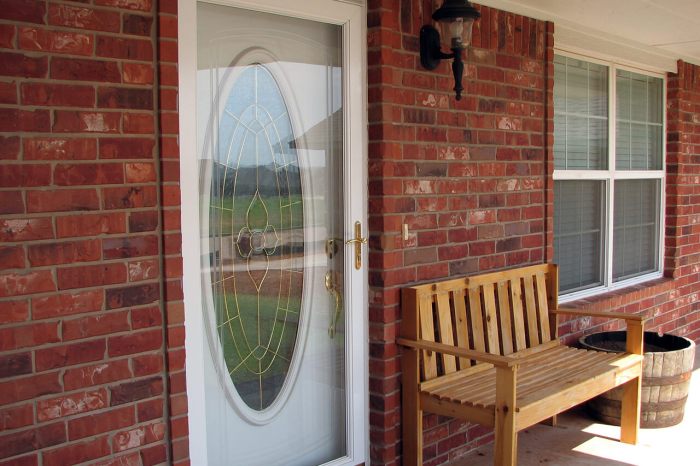How Lighting Affects Interior Wellness and Sleep: Shedding Light on a Restful Environment
Exploring the impact of lighting on our well-being and sleep, this topic delves into the fascinating relationship between illumination and a good night's rest. As we navigate the intricate interplay between light and our internal rhythms, prepare to uncover the secrets to creating a harmonious space that nurtures both body and mind.
Delve into the nuances of how different lighting setups can influence our daily routines and overall health, providing a fresh perspective on the importance of light in our living spaces.
How Lighting Impacts Circadian Rhythms

Lighting plays a crucial role in regulating our body's internal clock, also known as the circadian rhythm. This natural cycle determines our sleep-wake patterns, hormone production, and overall bodily functions. Different types of light can either disrupt or enhance our circadian rhythms, ultimately affecting our sleep patterns and overall wellness.
Types of Light and Their Effects
- Blue Light: Blue light, typically emitted by electronic devices and energy-efficient lighting, can disrupt melatonin production, the hormone responsible for promoting sleep. Exposure to blue light in the evening can trick our bodies into thinking it's still daytime, making it harder to fall asleep.
- Warm Light: On the other hand, warm light with red or orange tones, like that from incandescent bulbs, promotes relaxation and signals to our bodies that it's time to wind down and prepare for sleep.
- Natural Light: Exposure to natural light during the day helps regulate our circadian rhythms, signaling to our bodies when it's time to be awake and alert. Getting enough natural light during the day can improve sleep quality and overall well-being.
Benefits of Natural Light in Interior Spaces
Natural light has numerous advantages when incorporated into indoor environments. Not only does it enhance the overall aesthetic of a space, but it also has a positive impact on mood and well-being.
Enhanced Mood and Well-being
Exposure to natural light has been linked to improved mood and increased productivity. It can help reduce feelings of stress, anxiety, and depression, creating a more uplifting and positive environment.
Maximizing Natural Light in Interior Design
- Use light-colored walls and furnishings to reflect and amplify natural light.
- Keep windows unobstructed to allow maximum light penetration.
- Incorporate skylights or light tubes to bring natural light into interior spaces without windows.
- Utilize mirrors strategically to bounce light around the room and create a brighter atmosphere.
- Consider light-filtering window treatments to control the amount of light entering the space.
Effects of Artificial Lighting on Sleep Quality

Artificial lighting plays a significant role in our sleep quality as it can interfere with the body's production of melatonin, a hormone that regulates sleep-wake cycles. Exposure to artificial light, especially blue light emitted by screens and LED bulbs, can suppress melatonin production, making it harder to fall asleep and disrupting our circadian rhythm.
Types of Artificial Lighting and Their Effects on Sleep Quality
There are different types of artificial lighting that can impact our sleep quality:
- Blue light: Found in LED bulbs, smartphones, and computer screens, blue light is known to suppress melatonin production the most, leading to poor sleep quality.
- Warm light: On the other hand, warm-toned lighting such as incandescent bulbs and dimmable lights have less of an impact on melatonin production and can be less disruptive to sleep.
- Fluorescent light: Fluorescent lighting can also affect sleep quality, especially if it emits a cool-toned light that mimics daylight.
Tips for Selecting and Using Artificial Lighting to Improve Sleep Hygiene
Here are some tips to help you optimize your artificial lighting for better sleep:
- Avoid blue light exposure before bedtime by using warm-toned light bulbs and installing dimmer switches to reduce brightness in the evening.
- Limit screen time at least an hour before bed to minimize exposure to blue light from electronic devices.
- Consider using blackout curtains or blinds to block out external sources of artificial light that can disrupt your sleep.
- Use night lights with red or amber hues, as these colors have less impact on melatonin production compared to blue or white light.
Lighting Design Techniques for Better Sleep

Creating a calming and conducive environment for sleep through lighting design is crucial for overall well-being. Here are some techniques to enhance sleep quality:
Principles of Lighting Design for Relaxation
- Use warm, soft lighting to create a cozy and relaxing atmosphere in the bedroom.
- Avoid harsh overhead lighting and opt for dimmable lights to control brightness levels.
- Incorporate lighting fixtures with adjustable color temperatures to mimic natural light changes throughout the day.
Importance of Task Lighting vs. Ambient Lighting
Task lighting provides focused illumination for activities like reading, while ambient lighting sets the overall mood in the bedroom. Balancing both types of lighting is key for a functional yet relaxing space.
Innovative Lighting Solutions for Better Sleep
- Install smart lighting systems that can be programmed to gradually dim as bedtime approaches, signaling the body to wind down.
- Consider using circadian lighting fixtures that adjust color temperature and intensity based on the time of day to regulate the sleep-wake cycle.
- Utilize blackout curtains or blinds to block out external light sources that may disrupt sleep patterns.
Closing Notes
In conclusion, understanding the profound effects of lighting on our wellness and sleep opens up a world of possibilities for designing spaces that promote tranquility and rejuvenation. By harnessing the power of light in strategic ways, we pave the path to a more restful and revitalizing environment.
User Queries
How does lighting impact circadian rhythms?
Lighting plays a crucial role in regulating our body's internal clock, influencing our sleep-wake cycles and overall well-being.
What are the benefits of natural light in interior spaces?
Natural light can enhance mood, well-being, and productivity, creating a healthier indoor environment.
How does artificial lighting affect sleep quality?
Artificial lighting can disrupt melatonin production, leading to poor sleep quality and potential health issues.
What are some lighting design techniques for better sleep?
Using warm, dim lighting in the evening and incorporating blackout curtains can help promote relaxation and improve sleep quality.


